Edible flowers are exactly what they sound like—certain plants whose flowers are safe to eat and healthy for you.
Several of the molecular compounds that make flowers colorful also confer health benefits, and using edible flowers as a garnish, dish decoration, or herbal supplement source is a great way to take advantage of these benefits.
Many herbs you’ll see in medicinal preparations, like lavender, chamomile, coriander, and dandelion, are in fact edible flowers which can be consumed whole.
Edible flowers deliver essential minerals, antioxidants, and can be used as herbal treatments for everything from weight loss to water retention.
Here are the best sources of edible flowers, plus an in-depth look at some of the benefits and side effects of edible flowers.
Research
Rankings
1. Feel Good Organics Lavender Flowers
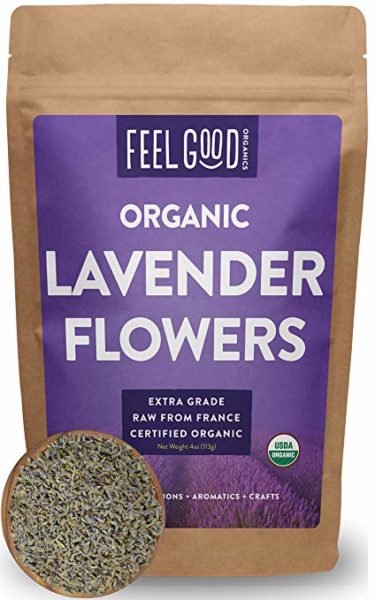
For a high-quality organically certified edible flower with strong health benefits, look no further than Feel Good Organics Lavender Flowers.
These lavender flower petals are carefully dried, and their organic certification means you don’t have to worry about any pesticide or synthetic herbicide residue on the plant material.
Lavender adds a distinctive scent and flavor to any dish or tea, and on top of that, is replete with health benefits. Among the single-source edible flowers, Feel Good Organics Lavender Flowers is the best.
2. bMAKER Bulk Botanical Flowers
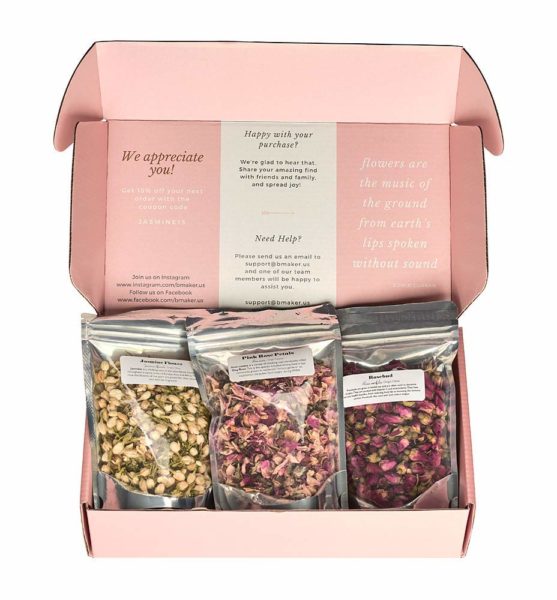
bMAKER Bulk Botanical Flowers is a great choice if you want access to a wide range of edible flowers.
This kit contains dried flowers from jasmine, rosebud, lavender, marigold, chamomile, and pink rose bud, as well as a small vial of rose essential oil.
These edible flower are perfect for garnishes and hand-blended tea, and with such a wide range of ingredients, you have access to a huge variety of colors, scents, flavors, and nutrients.
Moreover, since each type of flower comes individually packaged, you don’t have to use a homogenous mix for everything.
3. Plant Theatre Gourmet Flower Kit
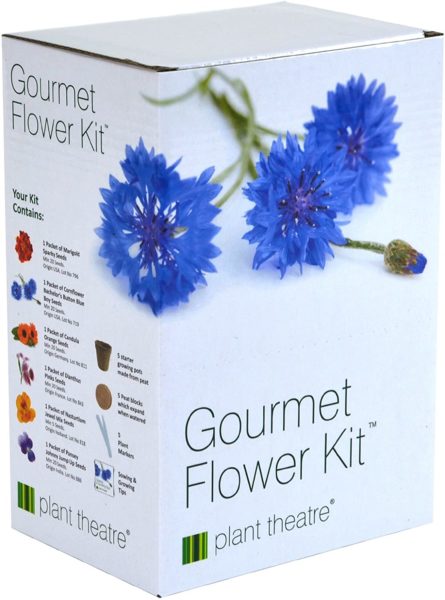
If you want edible flowers that are as fresh as possible, you’ve only got one option: grow them yourself. Plant Theatre is the best kit for growing your own edible flowers from seeds.
This kit comes with seeds for daisy, cornflower, and viola tricolor, all of which produce flowers that are both healthy and aesthetically beautiful.
Growing your own edible flowers also ensures that you have total control over the fertilizers and other compounds applied (or not) to the plants.
4. Feel Good Organics Hibiscus Flowers
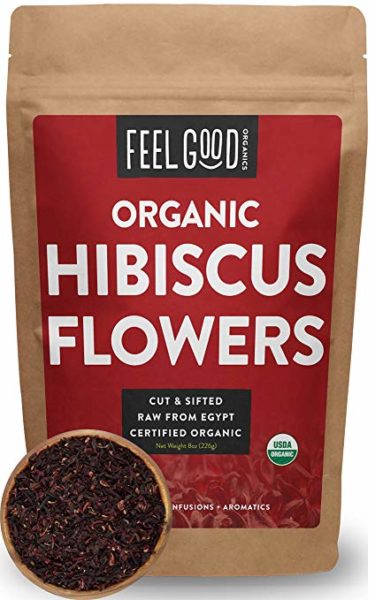
Hibiscus is an edible flower that can range from pale pink to deep red, and Feel Good Organics sells the best dried hibiscus petals.
It’s a popular ingredient in both teas and herbal preparations, and thanks to the organic certification, you can be confident that there are no toxic contaminants in the dried flower material.
5. Bluechai Spring Flower Blend
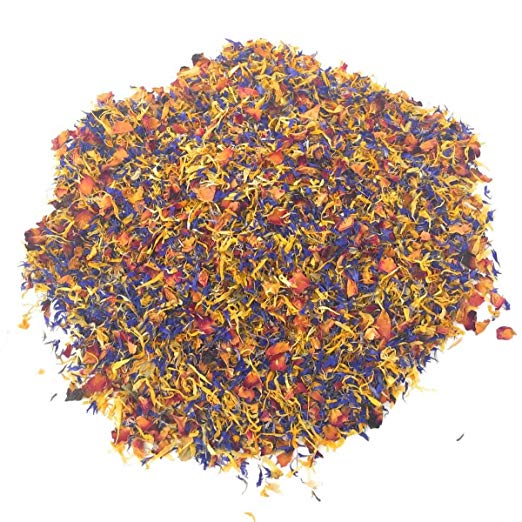
Bluechai Spring Flower Blend contains a mixture of rose, marigold, and cornflower petals. The result is a confetti-like mixture of reds, oranges, and blues that are great for a garnish or making your own tea, though the herbal benefits of these ingredients aren’t quite as strong as some of the other options on the market. That being said, the mixture of colors is quite visually appealing.
6. bMAKER Dried Rose Buds and Petals
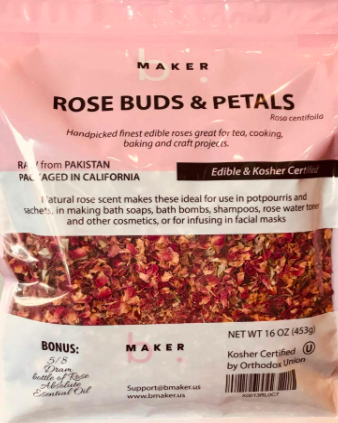
In addition to its bulk botanical flower package, bMAKER also sells rose petals and buds by themselves. If you are focused on making rose-oriented foods, teas, or herbal preparations, it’s a solid choice.
You’ll also get a sample vial of rose essential oil, which is a great addition to desserts, cosmetics, and herbal preparations.
7. Teabloom Flowering Tea
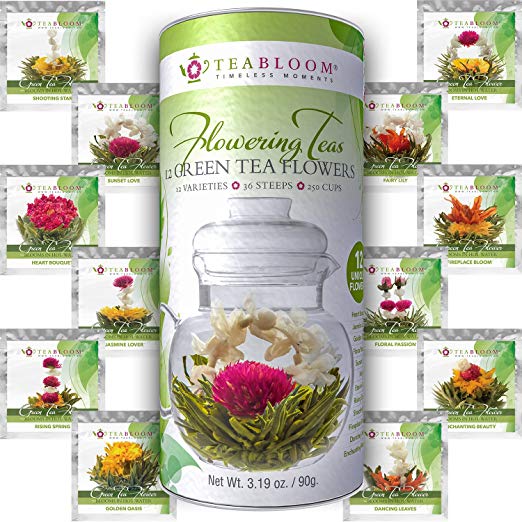
For edible flowers specifically designed for brewing tea, Teabloom Flowering Tea is the way to go.
This variety pack includes a huge range of tea flowers in 12 different blends that bloom and expand in hot water, creating a tea that’s both beautiful to look at and healthy to drink.
While these edible flowers have limited versatility, as they aren’t designed for other uses, they’re the best pick when it comes to edible flowers for making tea.
8. Wild Hibiscus Flower Company Flowers in Syrup

Wild Hibiscus Flower Company Flowers in Syrup are exactly what they sound like: hibiscus flowers, preserved in a concentrated sugar solution.
The syrup prevents any bacteria from growing, and the hibiscus flowers themselves are wild-grown. The sugar content may not thrill everyone, but it does mean the flowers do not need to be dried, so more of their biologically active compounds are preserved. They’re also great for cocktails.
9. Oameusa Dried Flowers

Oameusa Dried Flowers give you the greatest amount of variety in edible flowers—you get nine different types of edible flowers, each packaged individually.
However, the flowers that are used aren’t the most colorful or flavorful, so while these edible flowers are all right for decorative purposes, they aren’t the strongest choice when it comes to herbal preparations or health benefits.
10. Suncore Rose Petals
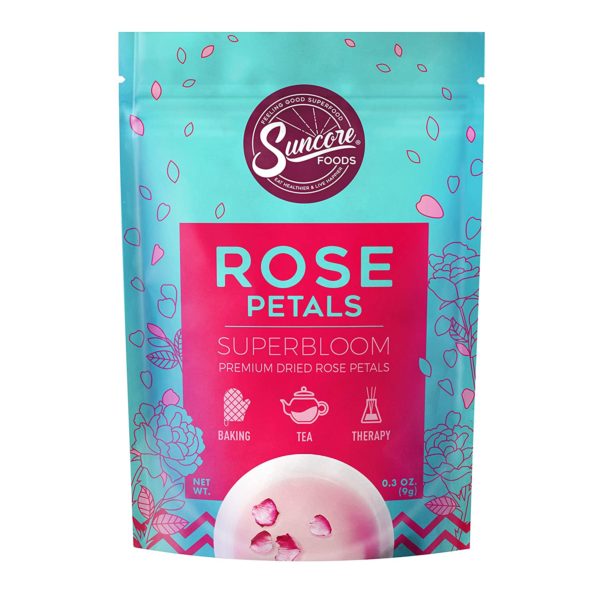
These rose petals are great for garnishing, cooking, tea, and baking, though their simple formulation and lack of an organic certification lands them lower in the rankings compared to some of the competition.
Category winners
Best edible flowers overall: Feel Good Organics Lavender Flowers
When it comes to practical uses for edible flowers, lavender tops the charts thanks to its soothing, anxiolytic effects. Its applications are nearly endless, from aromatherapy to tea, and the organic certification from Feel Good Organics means you don’t have to worry about any synthetic additives mixed in with the flowers.
Best edible flowers for tea: bMAKER Bulk Botanical Flowers
bMAKER Bulk Botanical Flowers are perfect for adding to tea: the broad range of colors and flavors from chamomile, lavender, and marigold, among others, make the perfect addition to your favorite tea—herbal or otherwise.
Best edible flowers for cocktails: Wild Hibiscus Flowers in Syrup
Want to make your drinks with a flourish? Wild Hibiscus is a perfect choice. These flowers are eye-catching and 100% edible, making your cocktail garnish more than just decoration.
Best edible flowers for anxiety: Feel Good Organics Lavender Flowers
Lavender has long been used as a natural remedy for anxiety thanks to its calming, soothing effect. Either on its own or as an additive to herbal tea, this source of lavender is a great pick.
Best edible flowers for weight loss: Feel Good Organics Lavender Flowers
Controlling appetite is one thing herbal remedies like lavender are well-suited for, which is why we recommend Feel Good Organics Lavender Flowers as an edible flower source for people looking to lose weight. Its calming effect can help tamp down on hunger cravings, which are often driven by anxiety.
Best high antioxidant edible flowers: bMAKER Bulk Botanical Flowers
The broad variety of ingredients in bMAKER Bulk Botanical Flowers can’t be matched, and when it comes to antioxidants, variety is king—that’s why this is our pick for a high-antioxidant selection of edible flowers.
Who should buy edible flowers?
Edible flowers are safe for most individuals and are a great wait to increase the nutritional value of your meals without adding a ton of calories. Edible flowers are also great for individuals who suffer from anxiety and gut issues. Due to their antioxidant and anti-inflammatory benefits, edible flowers can also help prevent and manage certain chronic diseases.
In general, edible flowers are safe for special populations. That being said, children and pregnant women should consult a doctor to be on the safe side.
How we ranked
When ranking the best edible flowers, we almost exclusively stuck to dried flowers. We did include Wild Hibiscus Flower Company Flowers in Syrup because the syrup prevents any bacteria from growing, leaving a pure product.
However, we did rank it near the bottom because of all the added sugar. We also included Nature’s Blossom Sow & Grow because it allowed for total quality control of your flowers. Their kit gives you a variety of colorful seeds to provide the freshest flowers without the use of fertilizers or other compounds.
Next, we sorted products into two categories: flower blends and individuals. Flower blends, like BlueChai Spring Flower Blend, ranked slightly lower because the beneficial effects tended to milder due to the reduced dosage of each flower in the blend.
While technically a blend, bMaker ranked in our top 3 because all flowers were individually packaged, letting you go all in with one type of flower or mix it up and blend it yourself.
Our top pick, Feel Good Organics Lavender Flowers, ranked high for several reasons. Their organic certification allowed us to be certain no pesticides or synthetic herbicide residue would be left on the plants. Furthermore, lavender is one of the most scientifically proven flowers that can both add good flavor to any dish while still providing a myriad of health benefits.
Benefits
Only a small subset of plants have flowers that are actually edible. However, these edible flowers are both visually appealing and healthy, thanks to the presence of strong antioxidants in the compounds that give these flowers their vibrant colors.
Additionally, many familiar herbs, like coriander and lavender, are actually just edible flowers. These edible flowers have medicinal and herbal properties as well.
Edible flowers can be used to make tea, garnish desserts and other dishes, or as ingredients in body washes and other cosmetic materials or herbal preparations.
Edible flowers of lavender could be used to reduce levels of anxiety. Lavender is known to contain the compound linalool, which has been investigated for possible anxiety-reducing effects.
A review study published in 2010 in the Nutrition Journal examined a range of herbal compounds used to treat anxiety, and noted that some preliminary work had been conducted on lavender (1).
While preliminary results were promising, the researchers noted that these studies had not been done in a controlled way, so the evidence is not as strong as that for other supplemental treatments.
Some research in rats does support the notion that lavender contains compounds which could ameliorate the effects of anxiety.
A paper published by a team at William Beaumont Army Medical Center examined how a lavender extract changed the behavior of anxious rats in a maze, and concluded that the lavender compounds may have created changes in motor movement and locomotion (2)—perhaps leading to less anxious and erratic movements.
Edible flowers of dandelion could help reduce gastrointestinal problems and to induce water loss. Dandelion root is a popular herbal supplement in its own right, but the entire plant (flower included) is edible and contains many of the same compounds.
Dandelion flowers can be used to make tea, steamed or roasted, dried, or even eaten raw. Dandelion can also be used as a diuretic to reduce bloating and water retention.
A study published in 2009 in the Journal of Alternative and Complementary Medicine examined the diuretic effects of a dandelion extract on urinary water extraction over the course of 24 hours (3).
A group of participants had a baseline measurement of their water excretion in urine, then took a dandelion supplement and had their urine output monitored over the following 24 hours.
The results showed that the dandelion extract substantially increased urine output, suggesting that edible dandelion flowers could also be used to encourage water loss and reduce bloating.
Hibiscus flowers may help reduce weight gain. Research conducted in Mexico has investigated hibiscus as a possible anti-obesity agent, and indeed, hibiscus has a long history as an herbal medicine in Mexico.
A research paper published in 2007 in the Journal of Ethnopharmacology studied the effects of a hibiscus extract in a group of obesity-prone mice (4).
The researchers were able to demonstrate that mice fed the hibiscus flower extract gained less weight and had several favorable metabolic changes, whereas had they not been fed the hibiscus extract, they presumably would have gained additional weight.
It’s hard to extrapolate these results to humans, because the doses are not directly translatable, but the potential for hibiscus to act as a weight loss agent is promising.
Edible flowers are rich in antioxidants and minerals. As is often the case with antioxidants, the compounds that give edible flowers their vibrant colors are also powerful scavengers of free radicals.
A research paper published in 2012 in the journal Molecules examined the antioxidant and mineral content of several different edible flowers, with the goal of characterizing whether they could be a useful source of human nutrition (5).
The researchers found that several minerals, including potassium, are contained at high enough concentrations in edible flowers to provide a significant dietary source of these minerals.
Moreover, edible flowers are rich in antioxidants, and deliver free radical scavenging capabilities similar to that of several grams of vitamin C.
Side effects
As with other herbal preparations made from plant material, the primary concern and side effect worry is the risk of an allergic reaction.
These tend to be less common with more widely used edible flowers, though it’s possible to have a negative allergic reaction to any type of raw plant material, due to proteins, pollen, and other potential allergens contained in plants.
Additionally, using blends of edible flowers with multiple ingredients has an increased chance of causing an allergic reaction, just because of the increase in the number of potential allergens you are exposed to.
If you develop a rash, swelling, or irritation in your mouth, these are all signs that the edible flowers you are consuming could be causing an allergic reaction, If this is the case, you should stop using them.
It’s also possible to experience interactions between herbal compounds and synthetic pharmaceutical drugs, according to a scientific research article published in the British Journal of Clinical Pharmacology (6).
For people taking prescription medication, it’s always wise to talk to your doctor before adding a new herbal compound to your routine, and this includes the herbal compounds in edible flowers.
FAQ
Which types of flowers are safe to eat? It’s important to know which plants are edible prior to consuming them to prevent potentially dangerous side effects like poisoning. Some of the flowers that are edible include roses, lilacs, carnations, marigolds, pansies, and hibiscus.
Can you freeze edible flowers? Many people have begun freezing edible flowers in water to make ice cubes for fancy drinks. While it makes for a pretty beverage, it doesn’t do much in the way of preserving their quality.
How long do edible flowers last? Just how long edible flowers last depends on how you’re storing them. If you’re refrigerating them immediately after picking them, they may last about four or five days in your refrigerator. Freezing edible flowers will technically allow them to last a lifetime, but the quality will rapidly degrade as you unthaw them.
Ideally, you want to consume the flower as soon as its picked, as this will provide you with the most nutrients.
Where can you buy edible flowers? Edible flowers aren’t very popular, making them a little bit difficult to find in stores. More variety and higher-quality edible flowers can be found by visiting your local farmers market.
Some grocery stores may sell edible flowers in their produce sections. The actual selection of flowers that you’ll have depends on the store and the time of year. If you have a garden, it’s much easier to plant and pick edible flowers than it is to buy them. If you go this route, do your best to make sure that no pesticides or fertilizers were used in the growing process. Also, it’s important to physically check the flower to ensure that there are no insects or fungus.
Which flowers are poisonous? There are plenty of flowers that are considered toxic to humans, but the actual toxicity of the flowers varies from species to species. While some flowers may cause minor side effects like nausea and skin rashes, others may lead to serious health issues. The most poisonous plants to humans include daffodils, bloodroots, foxgloves, morning glories, and several types of lilies. For the most part, a flowers toxicity depends on how much you’re consuming and whether or not the flower was grown with pesticides and fertilizers.
Are edible flowers good for you? Edible flowers have incredible potential when it comes to nutritional content. Many edible flowers contain high levels of vitamins and minerals, as well as qualities that can help you fight off the development of some chronic diseases. Some may even have anti-cancer, anti-inflammatory, anti-bacterial, and anti-obesity effects.
What are the best tasting edible flowers? Taste depends on personal preference, so it’s challenging to identify the most delicious edible flowers. Popularity, on the other hand, is easy to measure. Some of the more popular edible flowers include lavender, hibiscus, roses, and violets.
What kinds of edible flowers are the easiest to grow? The easiest edible flowers to grow will depend on your physical environment. This includes temperature, humidity, available sunlight, amount of rain, and quality of your soil. Some of the more commonly grown edible flowers include mint, honeysuckles, chamomile, daylilies, pansies, and marigolds.
How nutritious are edible flowers? The nutritional value of edible flowers very much depends on the actual species of edible flowers. However, scientists have recently begun researching the nutritional content of edible flowers and what this may mean in terms of human health.
After an intensive analysis of 12 species of edible flowers, scientists concluded that some types of edible flowers are very nutrient-dense and include impressive amounts of minerals and potassium (7).
Another 2018 study determined that some edible flowers are full of antioxidants and have anti-bacterial properties. Additional studies have concluded that edible flowers may have anti-obesity, anti-cancer, and anti-inflammatory effects as well (8, 9).
In terms of actual nutrients present in edible flowers, a majority of them contain adequate levels of vitamin A, calcium, iron, and vitamin C. When added to your diet, edible flowers can prove extremely beneficial to your health and prevention of serious diseases.
When consuming edible flowers, should you do anything besides washing them? Before you even pick the edible flowers, the most important thing you should do is make sure that the flowers weren’t grown with pesticides and fertilizers and that there is no visible presence of fungus. The first thing you should do after the inspection is physically shake the flower to remove any lingering debris, dirt, or insects.
The next step of the process is thoroughly washing the flowers to guarantee they’re clean and free of dirt and insects.
When you’re actually eating the flowers, you should avoid eating the stem and leaves unless there is nutritional value to them, and they’ve proven to be safe for consumption. If you’re cooking or baking any type of flower, make sure to do so thoroughly.
Can edible flowers reduce anxiety levels? Yes, certain edible flowers like lavender have been shown to combat anxiety. One study showed that lavender extract could alter anxious behavior in rats, leading scientists to speculate about the effects it has on overall anxiety levels in humans (10).
Can you eat the leaves of an edible flower? Yes, many flowers, like dandelions, are actually entirely edible from their roots to their flowers. However, the stem tends to be a lot less tasty than the rest of the flower.
The leaves of edible flowers are also often considered to be bitter and lack taste. You can eat them since they most likely have pretty decent nutritional value, but it’s more than likely that you won’t enjoy it.
What can you use edible flowers for? Technically, you can eat many edible flowers without even adding them as an ingredient to a meal or beverage. The most common and natural way to consume edible flowers is by adding them to salads. It’s also relatively common to use edible flowers in teas, beverages, and even cocktails.
In recent years, it’s also become more common to add edible flowers into recipes for sweets. Though mostly used for decorative purposes on cakes and cupcakes, they also can help to influence the taste of the food product as well as bolster the nutritional value, turning desserts into somewhat healthy snacks for kids.
Why are edible flowers popular? Edible flowers have recently become more popular because of their nutritional value. Furthermore, many types of edible flowers actually have anti-obesity, anti-inflammatory, and anti-cancer effects when consumed.
When foods are determined to be nutrient-dense and help prevent disease spread and development, the masses begin to flock toward these foods. What’s most unique about edible flowers is how easily accessible and cheap they are. Though you might not be able to find them in stores or online, you can literally grow them in your garden to guarantee freshness and quality.
Do edible flowers cause dehydration? Certain edible flowers, like dandelion root, can cause dehydration since they act as a diuretic in the body. A 2009 study showed that dandelion root has diuretic effects in the body and can be used to treat bloating and water retention (11).
What are edible flowers? Edible flowers are exactly what they sound like: flowers that you can eat without risking adverse health side effects, like food poisoning.
For the most part, edible flowers are relatively nutrient-dense and have positive health benefits, like preventing the development of many chronic diseases. They’ve recently become more popular because they’re considered an innovative new ingredient that can produce positive health effects in the body.
How do you make edible flowers? Depending on how much of the flower you intend to use, how you cut the plant will be different. If you’re only planning on using the flower, you can cut the flower where it connects to the stem. If you’re looking to use the entire plant, you can cut the flower accordingly.
Once you’ve picked the flowers and cut them accurately, you need to make sure that you properly prepare them for cooking, baking, or consumption. That means making sure that you clean them properly and use them as suggested in the meal or dish you’re making. After this, they are ready to be cooked, served, and eaten.
Can eating flowers kill you? That really depends on the type of flower you’re eating and how much you’re actually consuming. There are absolutely poisonous flowers that can produce drastic health effects in humans, dogs, cats, and other animals.
Before you attempt to eat flowers, it’s imperative to confirm that the type you’re considering is completely safe for human consumption. If you have cats, dogs, or other animals in your home, make sure you keep your flowers out of reach to prevent your animals from accidentally eating them.
Do edible flowers help combat GI issues? In general, edible flowers can help to calm the GI system and help mitigate any issues like bloating.
Do edible flowers cause weight loss? Some edible flowers, like hibiscus, have shown to have anti-obesity effects. A 2007 study showed that rice fed hibiscus gained less weight than the rats who were not fed hibiscus (12). Of course, rat studies don’t always correlate to human output, but its promising to see the effects in these animals.
How can you avoid allergic reactions when consuming edible plants? There is not 100% guaranteed way to avoid an allergic reaction, but there are a few steps you can take to limit the chances. For starters, use a single flower instead of a blend, since blends offer more of a chance of an allergic reaction.
Related Articles
Recap
Edible flowers comprise the set of plants that produce flowers which can be safely eaten. Often, these flowers contain strong antioxidants or biologically active herbal compounds that have a range of health benefits.
Lavender, for example, could be useful for reducing anxiety, while dandelion might help improve gastrointestinal disturbances, increase water loss, and reduce bloating thanks to its diuretic effects.
All edible flowers deliver strong antioxidant compounds and can supply you with essential minerals like potassium. The only major side effects to be aware of are the possibility of an allergic reaction, which is something that accompanies any type of herbal supplement, as well as the possibility of interactions with prescription drugs.
As is always the case, products with a greater number of different plants that are sourced for material increase the risk of an allergic reaction to edible flowers, though the absolute risk is still quite low. Talking with your doctor is a smart idea if you have prescription medications that you take, especially if you take several.
Edible flowers can be used as a garnish or decoration on other dishes, like desserts, or they can be used to make tea or other herbal preparations to take full advantage of the biologically active compounds contained in the edible flower materials.
For BodyNutrition’s #1 edible flower recommendation, click here.